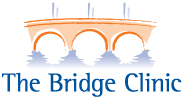History
Oldfield Lodge
Notes prepared by Maidenhead Heritage Centre
Oldfield Lodge is a Grade II* listed building, built in about 1790 for the Count de Crecy, Crecy being in northern France, where a battle against the French was won by Edward III in the year 1346. We do not yet know anything about Maidenhead's Count de Crecy, but he built his handsome house shortly after Maidenhead Bridge was completed (1777) and at a time when the town was really booming: the coaching era was in full swing.
The main external features are the wonderful Venetian windows on the piano nobile (main floor), the curved front steps and the handsome front door and fanlight. The western part of the house, nearest the town, was added at a later date. The boundary wall and gate piers along Bridge Road are original, with the original wrought-iron lamp holders. The gatehouse is a copy of the original which was demolished in the 1970's and is not listed. At the end of the 1970's the rear terrace and the Georgian-style balustrade were built by the then owner, an architect named David Saunders.
Internally, the Schedule of Listed Buildings notes that the entrance hall has 'pilasters with acanthus caps, plaster frieze and delicate cornice with double scrolled brackets and semi-circular fans'. There is an 'elegant elliptical stair' with a wreathed handrail and the reception rooms have decorative friezes and cornices. Pevsner's Berkshire volume of Buildings of England is very complimentary about Oldfield Lodge.
The name Oldfield originally applied to one of the common pastures of the Manor of Bray, and covered a large area from Bridge Road through the Fisheries almost to Bray. There were archery meetings here in the days of Queen Elizabeth I – and Oldfield School as an archery target as its school logo. In more modern times Old Field was used for cricket fixtures. Now historic Old Field is completely built up, all the housing development between Oldfield Lodge and the railway having taken place since 1968.
In 1790 Count de Crecy, who had come over from France to escape the guillotine, decided to build himself a small classical house on the site. We believe he bought with him his own artisans as much of the plasterwork particularly in the main upper ground floor rooms is not typically English of that period, but is very similar to some of the plasterwork in French chateaux.
Forty years later the property changed hands two or three times in quick succession and some details of ownership can be found in Bray church records but they are incomplete and somewhat sketchy.
Early in the 20th century Doctor Lyle, of sugar fame, who was a general practitioner owned the property and had a surgery there. It was then passed to the Eastick family who were also part of the sugar consortium.
The Saunders family purchased the property in 1972 after Fred Eastick died some three years earlier. At the time the property was in a state of complete disrepair. Due to probate legislation the property had been boarded up for 3 years. Thieves had got in and stolen all the lead from the roof. As a result water had poured in to all the upstairs rooms. There was fungus growing on most of the ceilings and the grounds were a jungle. Had it not have been a listed building developers would surely have knocked it down.
The family carefully undertook the refurbishment of the building and breathed new life in to it. It is thanks to the Saunders family that planners decided to upgrade the building to a Grade 2* listed building.
The partners of The Bridge Clinic purchased the Lodge and its ground in the year 2000. Firstly the Coach House was completely refurbished and opened in July 2001. The Lodge was then refurbished and converted sympathetically for clinic use. This opened in November 2003.
The Bridge Clinic is very proud of its historic building and its preservation should now be secure.







